Duy Hoang Thai
Directional Mean Curvature for Textured Image Demixing
Nov 25, 2016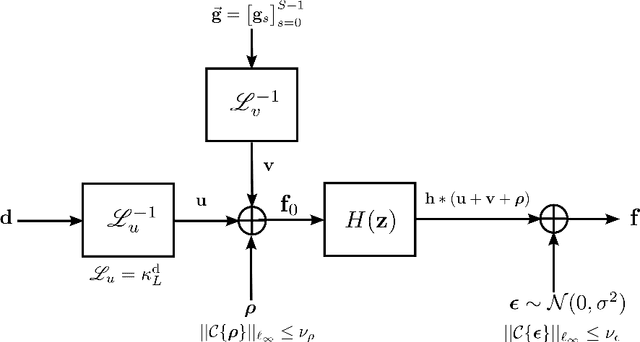

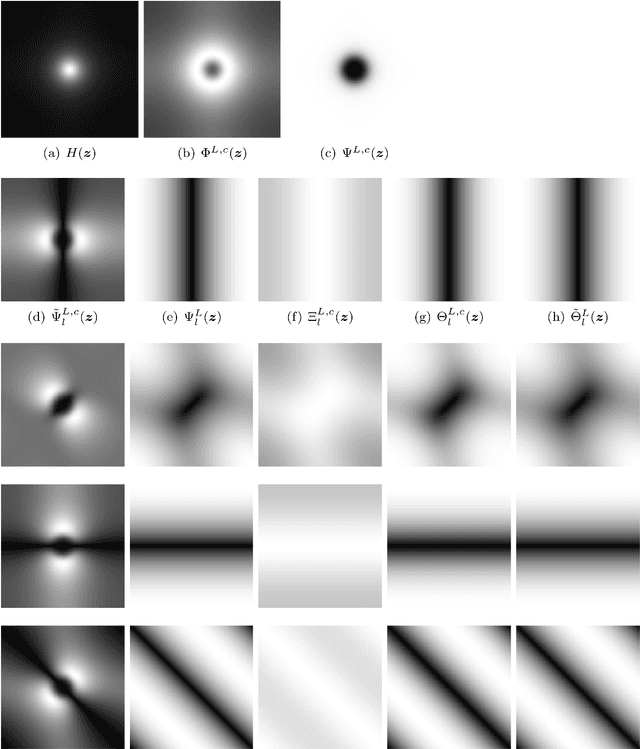
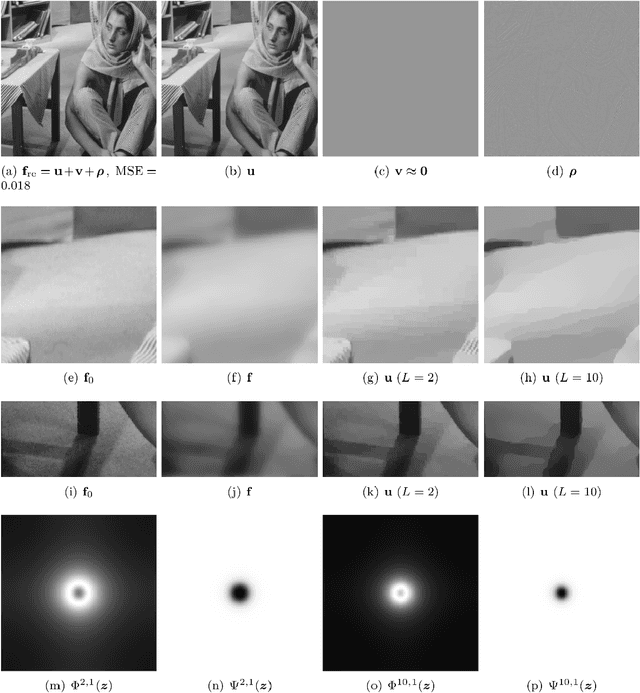
Abstract:Approximation theory plays an important role in image processing, especially image deconvolution and decomposition. For piecewise smooth images, there are many methods that have been developed over the past thirty years. The goal of this study is to devise similar and practical methodology for handling textured images. This problem is motivated by forensic imaging, since fingerprints, shoeprints and bullet ballistic evidence are textured images. In particular, it is known that texture information is almost destroyed by a blur operator, such as a blurred ballistic image captured from a low-cost microscope. The contribution of this work is twofold: first, we propose a mathematical model for textured image deconvolution and decomposition into four meaningful components, using a high-order partial differential equation approach based on the directional mean curvature. Second, we uncover a link between functional analysis and multiscale sampling theory, e.g., harmonic analysis and filter banks. Both theoretical results and examples with natural images are provided to illustrate the performance of the proposed model.
Multiphase Segmentation For Simultaneously Homogeneous and Textural Images
Jun 29, 2016



Abstract:Segmentation remains an important problem in image processing. For homogeneous (piecewise smooth) images, a number of important models have been developed and refined over the past several decades. However, these models often fail when applied to the substantially larger class of natural images that simultaneously contain regions of both texture and homogeneity. This work introduces a bi-level constrained minimization model for simultaneous multiphase segmentation of images containing both homogeneous and textural regions. We develop novel norms defined in different functional Banach spaces for the segmentation which results in a non-convex minimization. Finally, we develop a generalized notion of segmentation delving into approximation theory and demonstrating that a more refined decomposition of these images results in multiple meaningful components. Both theoretical results and demonstrations on natural images are provided.
Simultaneous Inpainting and Denoising by Directional Global Three-part Decomposition: Connecting Variational and Fourier Domain Based Image Processing
Jun 09, 2016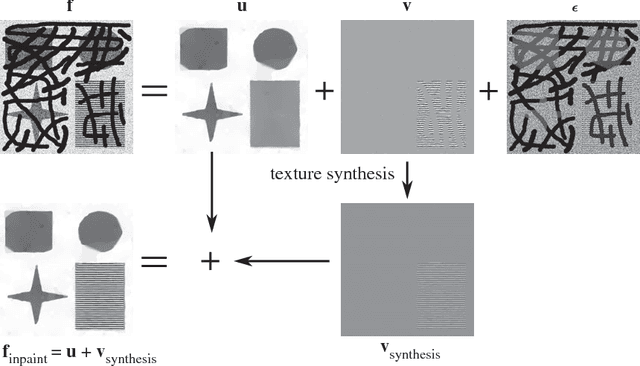

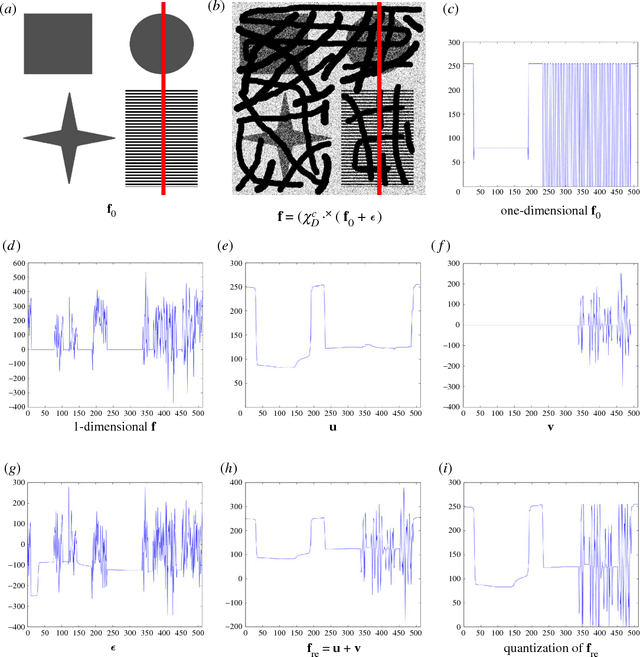

Abstract:We consider the very challenging task of restoring images (i) which have a large number of missing pixels, (ii) whose existing pixels are corrupted by noise and (iii) the ideal image to be restored contains both cartoon and texture elements. The combination of these three properties makes this inverse problem a very difficult one. The solution proposed in this manuscript is based on directional global three-part decomposition (DG3PD) [ThaiGottschlich2016] with directional total variation norm, directional G-norm and $\ell_\infty$-norm in curvelet domain as key ingredients of the model. Image decomposition by DG3PD enables a decoupled inpainting and denoising of the cartoon and texture components. A comparison to existing approaches for inpainting and denoising shows the advantages of the proposed method. Moreover, we regard the image restoration problem from the viewpoint of a Bayesian framework and we discuss the connections between the proposed solution by function space and related image representation by harmonic analysis and pyramid decomposition.
Directional Global Three-part Image Decomposition
Oct 06, 2015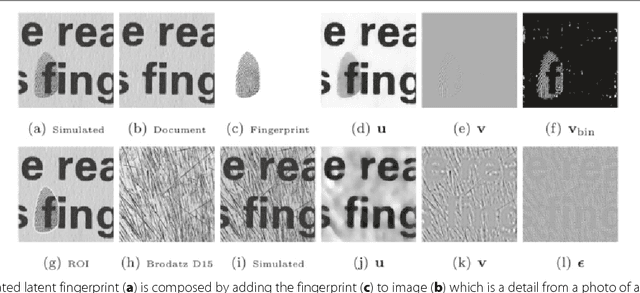

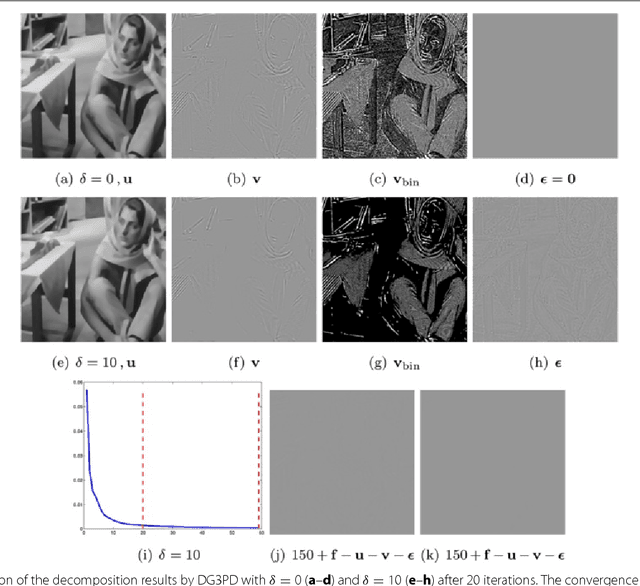
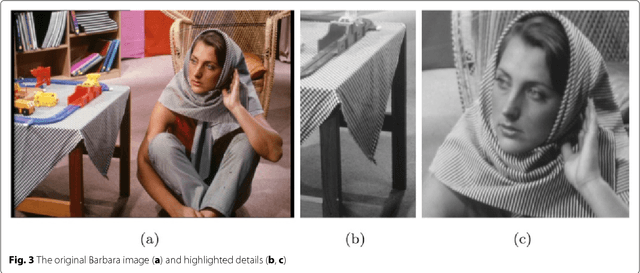
Abstract:We consider the task of image decomposition and we introduce a new model coined directional global three-part decomposition (DG3PD) for solving it. As key ingredients of the DG3PD model, we introduce a discrete multi-directional total variation norm and a discrete multi-directional G-norm. Using these novel norms, the proposed discrete DG3PD model can decompose an image into two parts or into three parts. Existing models for image decomposition by Vese and Osher, by Aujol and Chambolle, by Starck et al., and by Thai and Gottschlich are included as special cases in the new model. Decomposition of an image by DG3PD results in a cartoon image, a texture image and a residual image. Advantages of the DG3PD model over existing ones lie in the properties enforced on the cartoon and texture images. The geometric objects in the cartoon image have a very smooth surface and sharp edges. The texture image yields oscillating patterns on a defined scale which is both smooth and sparse. Moreover, the DG3PD method achieves the goal of perfect reconstruction by summation of all components better than the other considered methods. Relevant applications of DG3PD are a novel way of image compression as well as feature extraction for applications such as latent fingerprint processing and optical character recognition.
Global Variational Method for Fingerprint Segmentation by Three-part Decomposition
May 18, 2015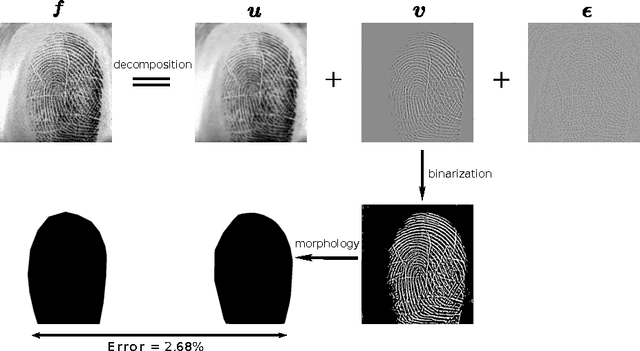



Abstract:Verifying an identity claim by fingerprint recognition is a commonplace experience for millions of people in their daily life, e.g. for unlocking a tablet computer or smartphone. The first processing step after fingerprint image acquisition is segmentation, i.e. dividing a fingerprint image into a foreground region which contains the relevant features for the comparison algorithm, and a background region. We propose a novel segmentation method by global three-part decomposition (G3PD). Based on global variational analysis, the G3PD method decomposes a fingerprint image into cartoon, texture and noise parts. After decomposition, the foreground region is obtained from the non-zero coefficients in the texture image using morphological processing. The segmentation performance of the G3PD method is compared to five state-of-the-art methods on a benchmark which comprises manually marked ground truth segmentation for 10560 images. Performance evaluations show that the G3PD method consistently outperforms existing methods in terms of segmentation accuracy.
Filter Design and Performance Evaluation for Fingerprint Image Segmentation
Jan 09, 2015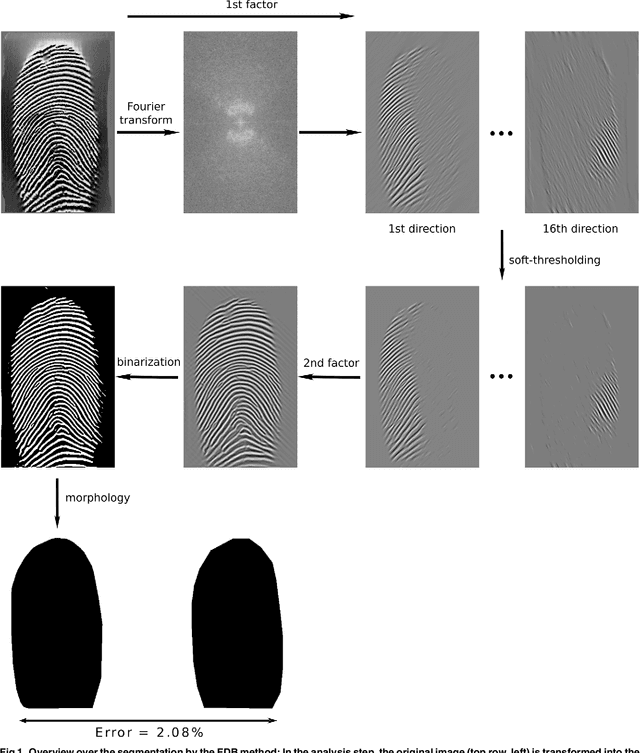
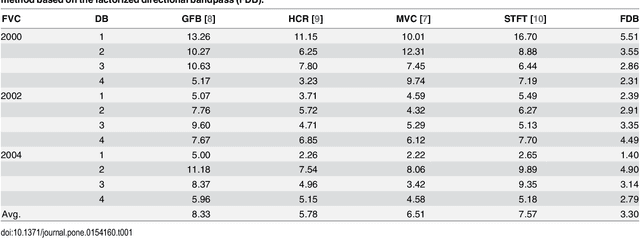
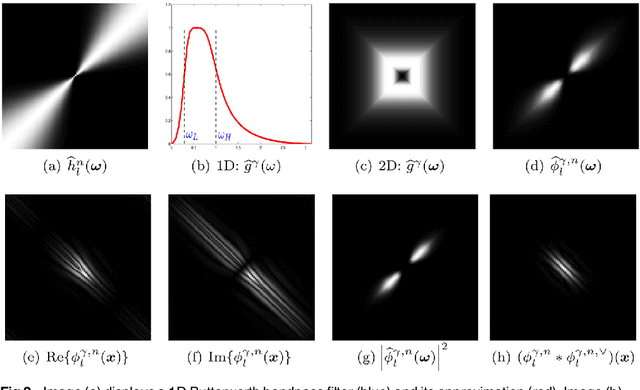
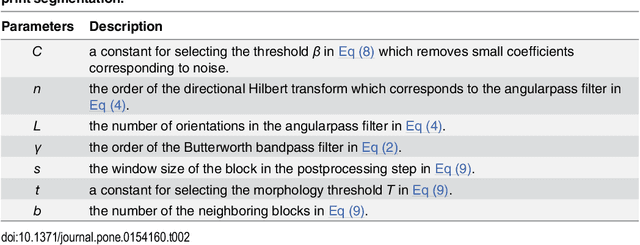
Abstract:Fingerprint recognition plays an important role in many commercial applications and is used by millions of people every day, e.g. for unlocking mobile phones. Fingerprint image segmentation is typically the first processing step of most fingerprint algorithms and it divides an image into foreground, the region of interest, and background. Two types of error can occur during this step which both have a negative impact on the recognition performance: 'true' foreground can be labeled as background and features like minutiae can be lost, or conversely 'true' background can be misclassified as foreground and spurious features can be introduced. The contribution of this paper is threefold: firstly, we propose a novel factorized directional bandpass (FDB) segmentation method for texture extraction based on the directional Hilbert transform of a Butterworth bandpass (DHBB) filter interwoven with soft-thresholding. Secondly, we provide a manually marked ground truth segmentation for 10560 images as an evaluation benchmark. Thirdly, we conduct a systematic performance comparison between the FDB method and four of the most often cited fingerprint segmentation algorithms showing that the FDB segmentation method clearly outperforms these four widely used methods. The benchmark and the implementation of the FDB method are made publicly available.
 Add to Chrome
Add to Chrome Add to Firefox
Add to Firefox Add to Edge
Add to Edge